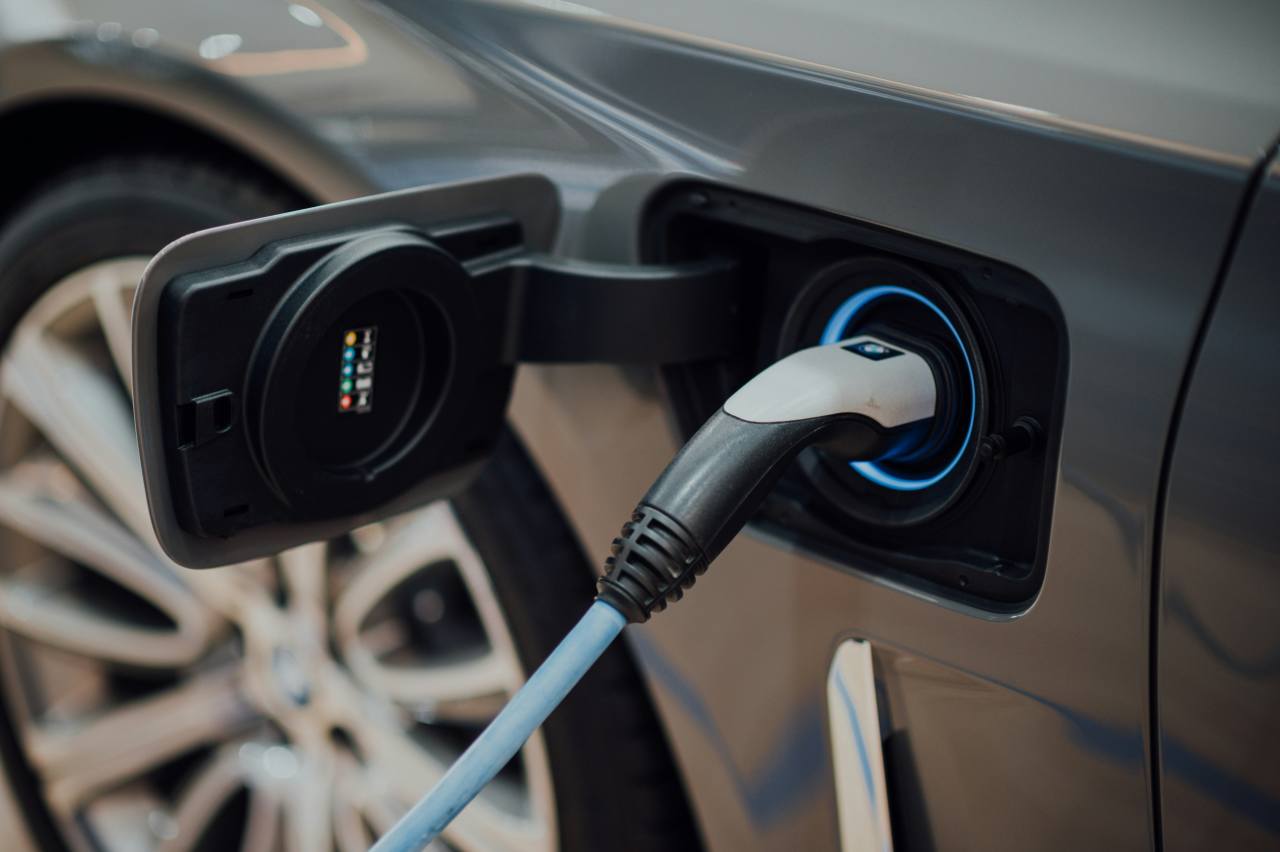As if taking inspiration from the Three Wise Men (seasonal reference for you there), Hyundai has three wise choices for those wishing to dip their toes, so to speak, in the world of electric cars. While we don't have any specific information about the personalities of the famed Magi, we know a lot about these Ioniqs.
For the true believers, the South Korean giant has an updated, full EV Ioniq for less than the well-established Nissan Leaf, but with more gear (and two spec levels). As I found out a couple of weeks ago, the less-courageous PHEV is a nice middle ground, especially for those who fantasise about that long-overdue road trip to Bourke.
The third in this electro-triumvirate is the Hybrid. Nothing cheeky or ground-breaking about this one, it does what the Toyota Prius has been doing for years - looking dowdy but saving a lot of juice while doing it. It's good value, presents a good ownership proposition and is part of the Ioniq's almost indecently quick 2020 update following its 2018 release.
Hyundai Ioniq 2020: Hybrid Elite
| Engine Type | Inline 4, 1.6L |
|---|---|
| Fuel Type | Unleaded Petrol/Electric |
| Fuel Efficiency | 3.4L/100km (combined) |
| Seating | 5 |
| Price From | $22,220 - $27,500 |
| Safety Rating |
|
Does it represent good value for the price? What features does it come with?
The entry point to the Ioniq range comes in top-spec Premium for $39,990 or the car I had, the $34,790 Elite. Not sure who came up with that naming strategy, but there we are.
You'll get a cloth interior with a brand new 10.25-inch screen on the dash, an eight-speaker stereo, 15-inch alloy wheels that somehow look like hubcaps, dual-zone climate control, keyless entry and start, reversing camera, rear parking sensors, cruise control, sat nav, auto headlights (with automatic high-beam dipping), impressive safety features, powered and heated door mirrors, tyre-pressure monitoring and a full-size alloy spare.
.jpg)
That huge touchscreen looks great and hosts a very impressive new version of Hyundai's own software, or you can plug in your CarPlay or Android Auto-enabled phone. There is also DAB and the usual data screens about which way the power is flowing and from where.
The Ioniq Hybrid isn't a very cheap proposition but it's not an expensive one, either. Compared to the Toyota Corolla Hybrid, it's about the same price as a ZR, but is cheaper than a base Prius. Having said that, the Ioniq is more metal for the money.
EV Specs for Hyundai Ioniq 2020
| Drivetrain | Hybrid |
|---|---|
| Battery capacity | 1.56Kwh |
| Battery type | Lithium-ion |
| Electric motor output | 32kW/170Nm |
| Combustion engine output | 77kW/147Nm |
| Combined output | 104kW/265Nm |
| Petrol efficiency | 3.4L/100km |
Is there anything interesting about its design?
As with the rest of the range, the changes are restricted to reshaped headlights and front and rear bumpers and do enough to stop the Ioniq from being unbelievably plain. Given the largely excellent styling prowess of the company, the Ioniq's blandness reminded me of its early 2000s malaise. It's still no stunner - the basic shape and profile remain unchanged - but it looks a bit more modern. You can't get away from the very high, aero-driven tail and the very dodgy-looking alloy wheels.
.jpg)
The cabin is largely similar but does have that new screen, which makes the car feel a bit more futuristic than before. It's mostly because of the huge touchscreen that the Hyundai clubs the Corolla Hybrid's hopeless offering into submission. The cloth interior is a bit featureless but I don't mind it, apart from making the cabin feel a bit dark. Some of the plastic fittings are a tad nasty feeling, but it's otherwise a nice place to be.
.jpg)
How practical is the space inside?
The Ioniq looks after its front passengers as well as any other mid-size hatchback. You get a good spot for your phone, USB and 12V ports and a pair of cupholders.
.jpg)
The rear seat is a little tight for me when I'm behind my driving position, but I can get my feet under the seat, so it's bearable for short or medium journeys. Three across the back would be uncomfortable and the headroom is marginal because of the sloping roof.
.jpg)
Front and rear rows offer a pair of cupholders and each door has a bottle holder.
.jpg)
The Hybrid features the biggest boot of the Ioniq trio, with 563 litres, which almost triples when you drop the seats, with 1518 litres if you pack it to the roof.
What are the key stats for the engine and transmission?
As it's a series hybrid, the engine is pretty straightforward. You get a 1.6-litre naturally aspirated petrol unit with assistance from a 32kW electric motor. Hyundai quotes a total of 104kW and 265Nm. On its own, the 1.6 is good for 77kW and 147Nm, so that electric torque boost is very welcome to help shift nearly 1500kg of Ioniq.
.jpg)
Driving the front wheels is a novel-for-a-hybrid six-speed twin-clutch automatic. In keeping with the Ioniq's overall vibe, performance is leisurely off the line but you can play that fun game of electric-only propulsion in slow or stop-start traffic.
How much fuel does it consume?
On the combined cycle, the official figure of 3.4L/100km is commendably close to the 4.5L/100km I got, which was almost entirely bashing around town and the suburbs. The total range with a full tank of petrol is an indicated 950km. It might be tricky to nail that with a 45 litre tank, but you could get close.
Warranty & Safety Rating
What safety equipment is fitted?
It might be the entry-level Ioniq, but the Hybrid is packed with safety gear, including seven airbags, ABS, stability and traction controls, high and low-speed forward AEB with pedestrian detection, forward collision warning, driver-attention detection, lane-departure warning, lane-keep assist and reverse cross traffic alert.
.jpg)
Add in two ISOFIX points and three top tethers for the kiddies and that's a pretty solid list.
As the Ioniq debuted across the ditch in 2016 before it arrived here, the five-star ANCAP rating goes back to December of that year.
What does it cost to own? What warranty is offered?
As with the rest of the Hyundai range, the PHEV comes with a five-year/unlimited-kilometre warranty. The capped-price-servicing regime lasts for the same period of time and you'll visit a dealer once a year, or every 15,000km. The battery is covered by an eight-year warranty.
Roadside assist starts with 12 months and with every service at Hyundai, you get another 12 months.
What's it like to drive around town?
The Hybrid is the most "normal" of the Ioniq range. While the engine still won't start when you press the button, it won't be long before a couple of whirrs and clunks signal the burning of hydrocarbons is underway. It's quite unlike, say, the Toyota Prius, which runs a CVT instead of the Hyundai's six-speed twin-clutch. The Ioniq can dither about which gear it wants on occasion and if you're not paying attention, you'll wonder why pulling a paddle doesn't change gears for you.
.jpg)
That's because, like the other two Ioniqs, you can use the paddle to select how aggressively the energy recovery works. It's not as polished as the PHEV on full recovery - the mode I favour - because the deceleration of the recovery feature makes it difficult to drive smoothly. It's a challenge I was more than willing to accept, but the middle setting was by far the best. I like the full recovery for its eco-potential but on most electrified cars it means less brake pedal use, meaning you can modulate progress on the throttle. Either way, you don't need the brake all that often, unless you're in the weakest setting.
.jpg)
The performance won't blow your mind, but this Ioniq behaves like an adequately powered hatchback, which is exactly what it is. Once you're in the cruise, though, the extra torque brought to you buy electrons is quite impressive, particularly when you want to overtake on urban roads in the 80-100km/h range. Not startling, no, but quick enough to make you wonder why it's so slow-feeling off the mark.
Otherwise, it's pretty similar to the PHEV. Tidy, if unspectacular ride and handling, light but direct steering and a general sense of calm, which is a nice set up for a city car.
Verdict
I still think the PHEV is the one to go for, because if you're a "standard" 30km-per-day city commuter with easy access to a power plug, you'll never need a petrol station until you take a long trip.
The Hybrid certainly removes any guesswork or plug-worry and delivers on the hybrid promise of astonishingly low fuel use. Anything under 5.0L/100km is a win, particularly with my unsympathetic right foot. Hyundai has addressed a few of the launch car's missteps, made it slightly better looking, given the interior a bit more wow and left the best-selling drivetrain alone. It's a great option and dukes it out with both the Corolla Hybrid and that slab-sided uggo, the Prius.



.jpg)

.jpg)

.jpg)




































.jpg)
.jpg)

.jpg)
.jpg)
.jpg)

.jpg)

.jpg)
.jpg)

Comments